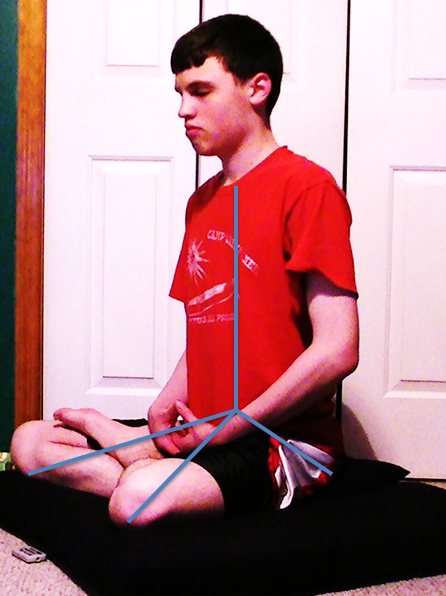
Tripod Sitting
For those who do not know, a tri-pod has three supports that create greater stability than one or two supports (of course). There are two tripod-like things that can aid in meditation-especially for beginners. They are a physical tripod and a mental tripod, what I call: Tripod Sitting and Tripod Focusing. Today, however, let's focus on Tripod Sitting.
Most people who meditate usually sit cross-legged; usually in some form of lotus position (half, quarter or full), Burmese position, or Indian style. In my opinion, cross-legged positions create the most stability in meditation. However, some people (myself included when I started out) sometimes sit in these positions in a way that will make it uncomfortable and unstable over time. Say for example, you sit in the half-lotus position on the floor. Weight is distributed on every point from your behind to your knees and lower leg is touching the floor. Oddly enough, having every point touching the floor sounds the most stable. In practice, it is not (at least for me). For me, sitting cross-legged on the just the floor caused my body to shift constantly since I got uncomfortable, and sometimes pain set in; especially in my lower back. What I found stable is having three points sharing the majority of the weight (a Tripod if you will). The three points when sitting cross-legged are the two knees and the buttocks.
It is simple to achieve the tri-pop effect; raising the buttocks off the ground. By raising the buttock, it puts the weight on it and the two knees, and helps keep the weight off of everything in-between. It also takes weight off the lower back. Simply sitting on a pillow can create the tripod effect. However, the thing about pillows is that they flatten overtime. Instead of a pillow, one can use a folded blanket, or a Zafu. In my experience, a higher pillow or Zafu is more comfortable for sitting in the Burmese position and Indian Style. For everything else, just being raised up slightly works just as well. As long as the knees are touching the ground, the tripod effect is created. If your knees do not touch the ground, add another pillow, or try some butterfly stretches to loosen up the hip muscles so they do.
The Tripod effect creates stability and comfort, and allows the meditator to meditate longer. It also makes sitting cross-legged easier, as it takes pressure off the thighs and the lower leg. In my experience meditating, figuring out the tripod effect was perhaps the most important discovery I made. I could finally meditate without pain :). I hope it will work for you too!
Happy Meditating!
-Seth
